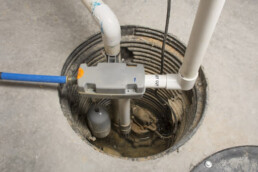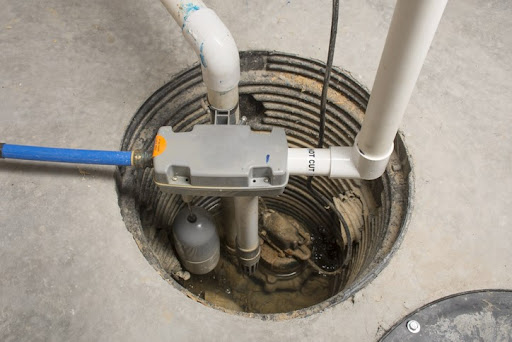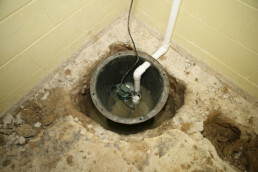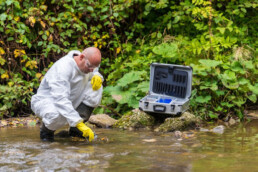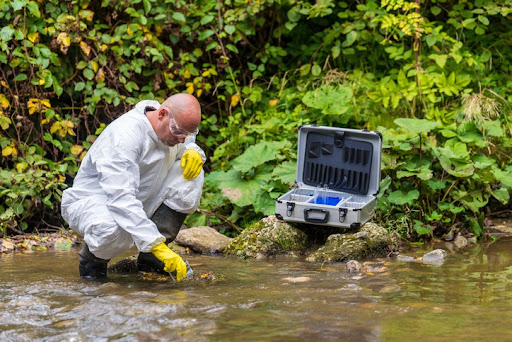How to Troubleshoot Common Sump Pump Problems
Sump pumps are vital for keeping your home safe and dry in rainy weather. While these devices are typically hardy and dependable, they experience problems occasionally. Here are some common sump pump problems and easy troubleshooting tips.
The Sump Pump Won’t Turn On
If the water is rising in the sump pit, but the pump won’t turn on, make sure it’s plugged in. Then, check the circuit breaker box, resetting any tripped breakers you find. If the pump still won’t turn on, the switch may be stuck, requiring you to call a professional to fix it. This is why regularly testing your sump pump is so important, so you have time to schedule a repair before the next storm hits.
The Sump Pump Runs Continuously
If your sump pump won’t turn off, the float could be positioned incorrectly. This component turns the pump on and off as the water level rises and falls. If the float is positioned too high, the pump may continue running when the sump pit is dry. This can cause unnecessary wear and tear and cause the motor to burn out prematurely. Check and adjust the float’s position if necessary. If that doesn’t work, call a professional to check for a stuck switch, which may be causing the pump to run continuously.
The Sump Pump Makes Strange Noises
This could be due to a damaged impeller, loose bearing, or clogged pump. Turn off and unplug the sump pump before checking for debris in the impeller or housing. If the impeller is damaged or the bearing is loose, call a professional to replace it.
The Sump Pump Vibrates Excessively
Excessive vibration is a sign that the pump is not installed correctly. Make sure the pump is sitting level in the pit and not touching the walls. If poor installation isn’t to blame, the issue may be with the impeller or bearings. In this case, call a professional to diagnose and fix the problem.
The Sump Pump Won’t Pump Water
A clogged or frozen discharge pipe could prevent the sump pump from working even though the motor is running. Check the pipe for debris or ice buildup and clear anything you find. If the pipe is clear, but the pump still isn’t pumping, the impeller or motor could have a problem. You’ll need a professional to diagnose and fix these underlying issues.
The Sump Pump Short Cycles
Short cycling is when the sump pump turns on and off too frequently. A faulty float switch or undersized pump could be to blame. Check the float switch position and adjust it if necessary. If that doesn’t work, you may need to upgrade to a larger pump.
If you’re experiencing problems with your sump pump, turn to Trinity Liquid Waste for help. We offer a range of sump pump services, including installation, repair, and maintenance. Our team boasts over 25 years of experience keeping homes and businesses in the San Francisco Bay Area safe and dry. For more information about troubleshooting your sump pump or to schedule a repair, please contact us at 510-874-6489 today.
How to Choose the Right Sump Pump?
Are you prepared for the rainy season? If you don’t already have a sump pump in your San Francisco Bay Area home, consider installing one to prevent rising groundwater from entering and damaging your home. Many types of sump pumps are available today, so it can be challenging to make a confident selection. Use this guide to help you choose the right sump pump features for your home.
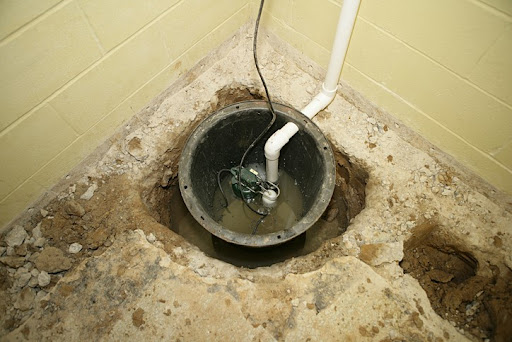
- Consider your needs: How large is the lowest level of your home? How often does flooding occur in your area? How much water do you need to pump out? A professional can help you answer these questions to help you begin the process of choosing the right sump pump.
- Compare the two main types of sump pumps: Sump pumps come in two primary forms—submersible and pedestal. Submersible pumps are placed in the sump pit and are designed to operate while underwater. Pedestal pumps are mounted above the sump pit and work while out of the water. Submersible pumps are generally more expensive than pedestal pumps but offer greater durability, efficiency, and quiet operation.
- Look at the horsepower: A sump pump’s horsepower determines how much water it can remove. A 1/3 HP sump pump provides average water removal, while 1/2 and 3/4 HP models address above-average needs. Work with a professional to help you choose a powerful enough pump to meet your needs.
- Install a backup system: Power outages are common during heavy storms, which is when you need your sump pump the most. A setup with a secondary pump or battery backup system ensures your home stays dry even if the power goes out. Everyone should consider some form of sump pump backup, especially if the home’s lowest level is used as a living space or storage area for valuables and keepsakes.
- Consider the noise level: The operating sound of a sump pump can be annoying if it’s located in a living area. If noise is a concern, choose a pump with a low decibel rating. Also, remember that submersible pumps allow the sump pit to be covered with a lid, reducing the noise level even further.
- Hire a professional to install your sump pump: Sump pump installation is not a DIY project. Knowledge and experience are required to install the pump correctly, make sure it works effectively, and help it last as long as possible. Once you’ve invested in a pump and had it professionally installed, remember to test the check valve regularly to ensure it functions properly when you need it most.
If you own a home or business in the San Francisco Bay Area, turn to Trinity Liquid Waste for the sump pump services you need. We offer sump pump installation, repair, and maintenance to help keep your property safe and dry. Our team boasts over 25 years of industry experience, and we are dedicated to providing the best customer service possible. For more information about choosing a sump pump or to schedule an appointment, please contact us at 510-874-6489 today.
Septic Maintenance Tips to Prolong Your System’s Lifespan
Septic systems are essential for homes not connected to a public sewer system. They treat and dispose of household wastewater in an underground tank and drain field. Using and maintaining your septic system properly ensures longevity and effectiveness. Learn the top seven tips for maintaining your septic system to keep it working well for many years.
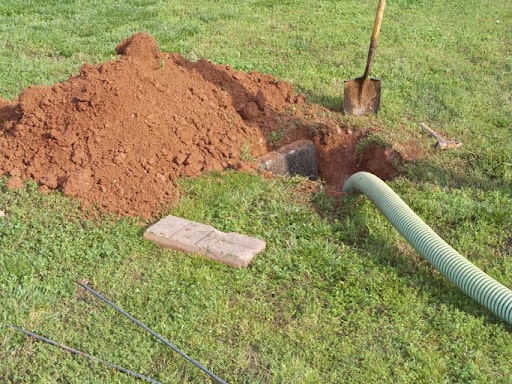
- Mind what you flush: Septic systems are designed to treat and dispose of human waste and biodegradable materials, so avoid flushing anything besides number one, number two, and toilet paper. This includes “flushable” wipes, feminine hygiene products, paper towels, and facial tissues.
- Think at the sink: Even with a garbage disposal, cooking grease, coffee grounds, and fatty food scraps should never go down the kitchen sink if you have a septic system. Dairy products are also harmful to pour down the drain because the lack of oxygen in the septic tank impairs the breakdown process.
- Use cleaning chemicals sparingly: Cleaning products can harm the good bacteria in a septic system. Therefore, it’s important to avoid antibacterial soap and disinfectants containing ammonia. Check your laundry detergent and toilet bowl cleaner as well to ensure they don’t contain bleach. Finally, never use a chemical drain cleaner with a septic system.
- Conserve water: Unlike public sewer systems, septic tanks can only handle so much wastewater at a time. Conserving water reduces the strain on the system and prevents overflows. Fix leaky faucets promptly, use low-flow fixtures, and avoid running multiple water sources simultaneously. Additionally, spread out water usage throughout the week instead of doing all the laundry or dishes on the same day.
- Protect the drain field: The drain field is where treated wastewater disperses into the soil. Keep this part of your yard clear of trees, bushes, and concrete structures. Then, don’t park or drive over the drain field, as this can compact the soil and harm the septic system.
- Schedule regular inspections: Professional septic inspections help spot small issues before they become major problems. Schedule an inspection every one to three years, before buying or selling property, and anytime you notice signs of septic trouble.
- Pump the septic tank regularly: A septic tank holds all the solid waste that enters the system. Over time, the tank fills up and must be pumped. Failing to do so can lead to solids entering the drain field or wastewater backing up into your home. That’s why it’s so important to keep up with this service every three to five years or as needed based on your tank’s size and the amount of use it receives.
Trinity Liquid Waste is a trusted provider of septic tank pumping, septic inspections, and septic repairs for residential and commercial customers in the San Francisco Bay Area. Our team of professionals aims to keep your system in top condition, drawing on over 25 years of industry experience. The next time you need septic services, don’t hesitate to reach out! You can call us at 510-874-6489 or fill out our online contact form.
What’s the Difference between a Septic Inspection and a Septic Pump-Out?
Maintaining a septic system is crucial to avoid costly repairs and ensure a long, reliable lifespan from your wastewater treatment system. The two main preventative septic services include septic inspections and septic pump-outs. Learn the difference between the two and how to tell when you need each one.
Septic Inspections
A septic inspection involves evaluating a septic system to determine its condition. Inspections should be conducted by a licensed professional with the expertise and equipment necessary to assess the septic tank, pipes, drain field, pumps, and other mechanical parts.
The primary purpose of a septic inspection is to identify any issues before they become serious problems. The inspector looks for signs of damage or wear and tear, such as cracks or leaks in the tank or pipes. They also check the drain field to ensure it’s absorbing wastewater properly and not becoming clogged with solids or other debris.
During a septic inspection, the technician begins by reviewing the system’s repair and maintenance history. They may also ask about your water usage habits and any changes since your last inspection, such as increased household occupants.
After this initial phase, the inspector conducts a visual examination. They may also use specialized equipment, such as a fiber-optic camera, to inspect components in hard-to-reach areas.
Once complete, the technician leaves you with a report detailing their findings and any recommended repairs or maintenance. Heed the information in this report to keep your septic system functioning properly and prevent costly repairs down the road.
A septic inspection is typically recommended every three years to determine if it’s time for septic pumping or if you can wait another year or two for this service. You should also schedule an inspection if you’re buying or selling a house with a septic system, or if you start noticing plumbing problems, such as slow drains, gurgling sounds, or foul odors.
Septic Pump-Outs
A septic pump-out involves removing the solid waste and sludge that accumulates in the septic tank over time. This service maintains the proper functioning of your septic system, as a full tank can lead to backups and other issues.
During a septic pump-out, the technician uses a hose to pump waste from the tank into a vacuum truck. Then, they hose down the tank to remove any remaining debris or build-up. Finally, the team disposes of waste material in an approved location, such as a wastewater treatment plant.
The Environmental Protection Agency (EPA) recommends pumping your septic tank every three to five years, depending on the size of the tank and the amount of use it receives. More frequent pump-outs may be needed if the system sees heavy use. Scheduling an inspection first helps you know when it’s time to pump the tank.
Trinity Liquid Waste offers professional septic inspections and pump-outs to keep your wastewater treatment system flowing smoothly. Our team of licensed professionals has over 25 years of experience serving residential and commercial customers in the San Francisco Bay Area. Rest assured that we have the necessary tools and expertise to assess your system, keep it functioning reliably, and extend its lifespan. Don’t wait for a septic system emergency—call us at 510-874-6489 or contact us online to request a septic inspection or pump-out today.

